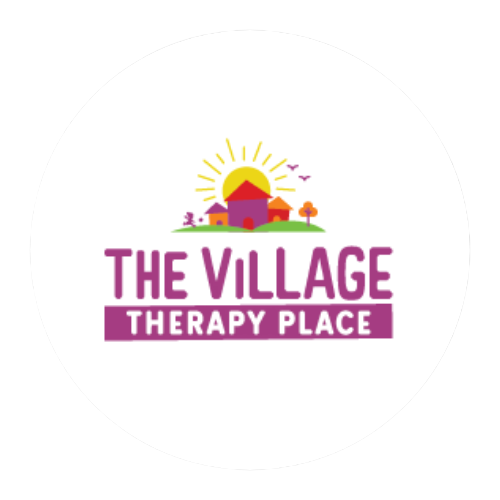Training Your Child's Brain to Process Auditory Information-Strategies to Improve Auditory Memory
Authored By Elise Weinstein, CCC-SLP, Speech Therapist at The Village Therapy Place
Auditory Processing Disorder (APD): Strategies to Improve Auditory Memory
Our past two posts have focused on compensatory strategies to help children with APDs function better at home and in school. Compensatory strategies are wonderful for helping children function with the skills they have today- whether this is at home or in a school setting- and should be used when children are trying to learn in school and follow routines at home. However, compensatory strategies do not improve the underlying weakness.
Direct intervention strategies aim to strengthen and improve auditory skills, so that a child can get better at processing auditory information. Direct intervention trains the brain to better process auditory information. This week’s post will focus on one area of auditory skill development: auditory memory.
Auditory Memory is the ability to remember information presented verbally without visual cues. Improving auditory memory can help children with APDs get better at processing auditory information, since they can more easily recall and retain what they heard.
Teach your child strategies to help with auditory processing, such as:
o Verbal Rehearsal (repeating a direction out loud)
o Silent Rehearsal (repeating a direction quietly in your head)
o Chunking (breaking up the information into chunks)
For more information about these strategies, see our post on SILENT REHEARSAL HERE. Look out for another post on CHUNKING coming soon!
Then…let your child practice these strategies during auditory memory games/exercises. Focus on the any/all of the following areas:
o Repeating Lists (Digits/Words)
A general rule of thumb is that a child should be able to recall the same number of words/numbers as their age. In other words, a 3 year old should be expected to recall 3 random digits, but a 5 year old should be able to repeat 5. Start with 1 or 2, and work your way up to your child’s age 😊
This can be done as a quick “drill” (e.g. can you say “3-4-7-6?” can you remember these words “apple-baseball-flower-chair?”). Drills are fast, easy, and can be done anytime and anywhere (e.g. when getting dressed, on the car ride to school, while getting a bath, etc.).
This can also be practiced during play (e.g. can you buy these foods at the store: apples, oranges, and eggs?” or “we need to put the cow, goat, and sheep in the puzzle”).
o Repeating Sentences of Increasing Length
Like we said above, start with shorter sentences (e.g. 3 word sentences like “Daddy drinks coffee) and gradually increase the sentence length. Also keep in mind how complex the sentence is- “Grandfather’s plaid vest tore yesterday” and “She plays with her ball” are both five words- but the vocabulary and linguistic complexity of the sentences are very different.
This can be practiced with a microphone toy. You hold the microphone and say a sentence (e.g. John likes pizza) and then pass the microphone to your child to repeat. See how many turns you can take without needing repetition!
Play a Mother May I-style game in which your child gets to take one step for each word he repeats from the sentence.
Play Candyland…without the cards! You can only move your piece by repeating all the words in the sentence (e.g. move 4 spots for a 4 word sentence).
o Following Directions with Multiple Pieces of Information
When giving your child directions, pay attention to the number of critical elements in the direction. Critical elements are pieces of information that need to be remembered. For example, if you tell your child to “color the giraffe yellow,” he has to remember 2 critical elements- giraffe and yellow. However, if you say “color a yellow shirt on a girl”- he now has to remember 3 pieces of information. Like before, start with fewer pieces of information and work your way up to more.
By incorporating auditory memory tasks into your daily routines, you are exercising the “auditory memory” portion of your child’s brain. Just like muscles get stronger from repeated exercise, the neural pathways in the brain get strengthened from repeated practice.
Follow us next week for another way to improve auditory skills: improving phonological awareness.
Who We Are:
We, at The Village Therapy Place, located in Wyckoff, NJ- in Bergen County-aim to provide integrative, neurodevelopmental, individualized, pediatric therapy in a warm, fun, and collaborative environment.
We offer pediatric services that include physical therapy, speech therapy, occupational therapy, feeding therapy, and DIR Floortime.
At The Village Therapy Place, we utilize current and evidence-based treatment techniques to help treat your child during his PT, OT, speech therapy, feeding therapy and DIR Floortime session. These include sensory integration, reflex integration, therapeutic listening, Kinesiotape, craniosacral therapy, NDT, BrainGym, feeding therapy, PROMPT, to name a few.
Our expert pediatric therapists offer a variety of treatment options, including 30/45/60 minute sessions, group classes, at home sessions and virtual therapy to best suit your child’s needs.
The pediatric physical therapists, occupational therapists & speech therapists at The Village Therapy Place are in constant contact with a child's caregivers to facilitate lasting change.
Call us today at (201) 201-8220 or email us at office@thevillagetherapyplace.com to speak with a pediatric expert who truly cares!

